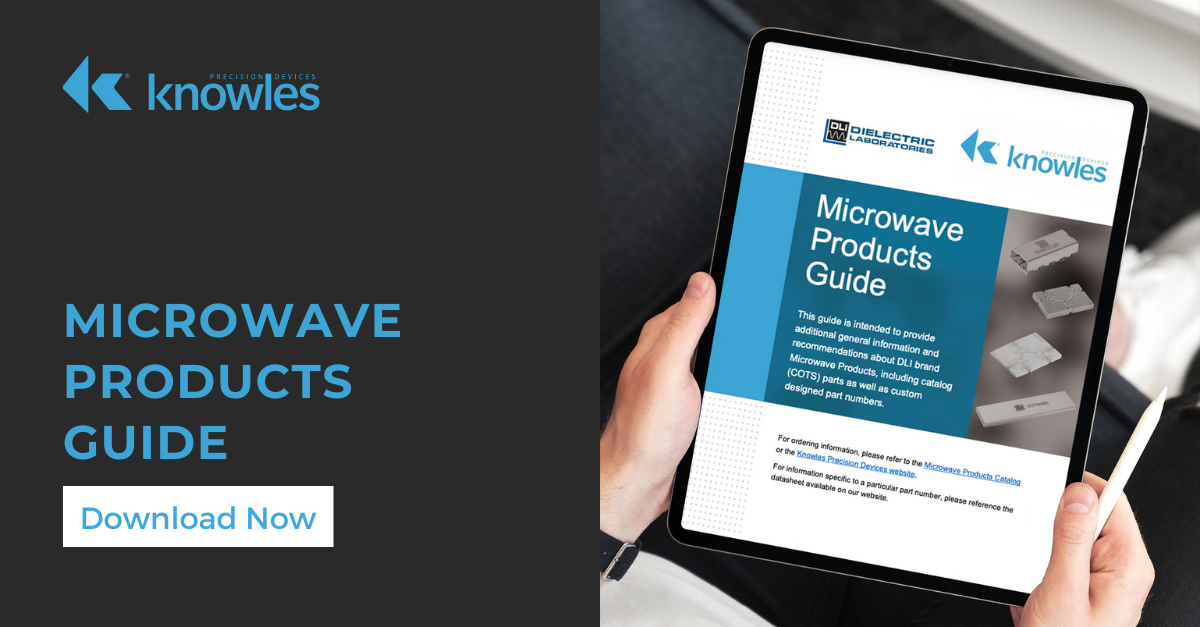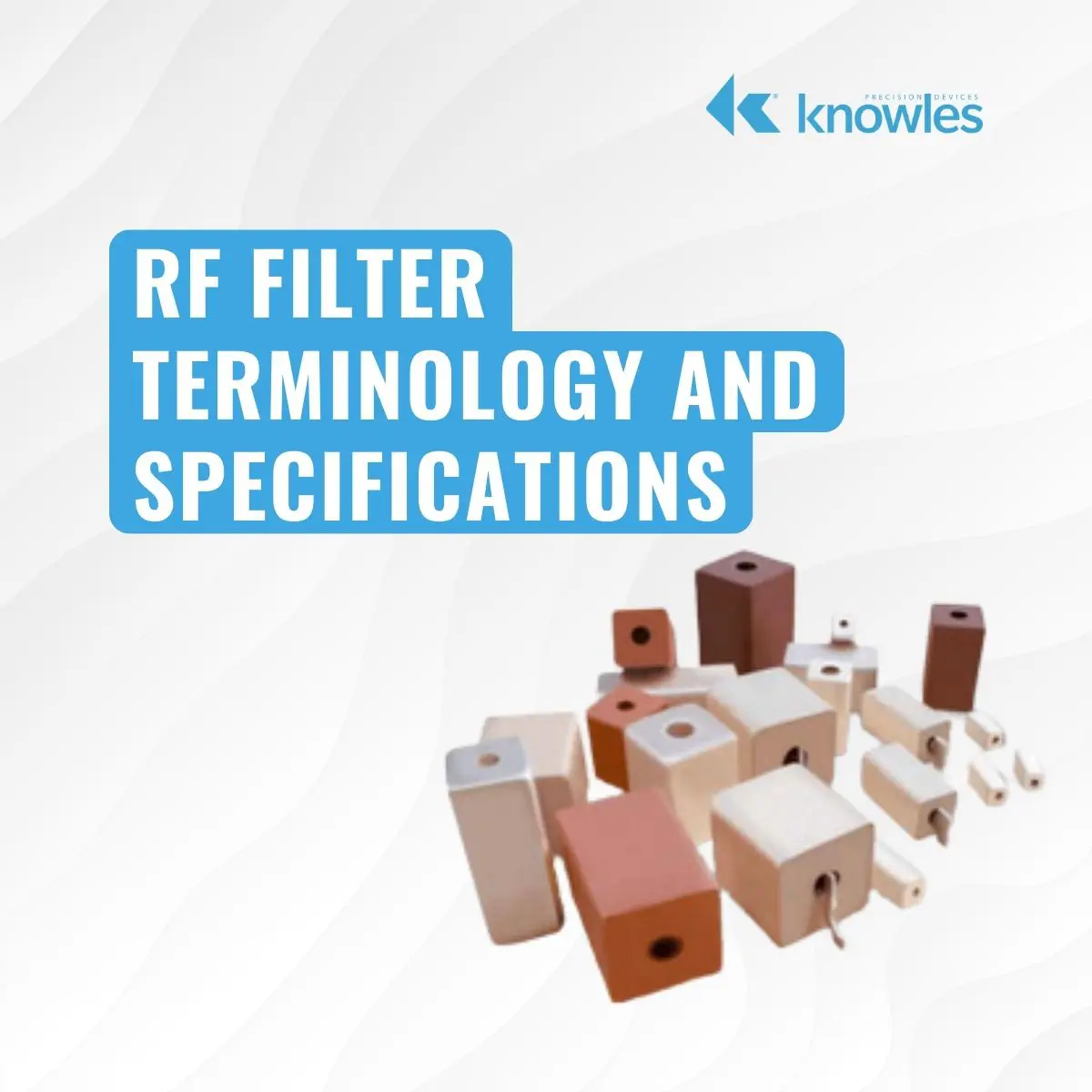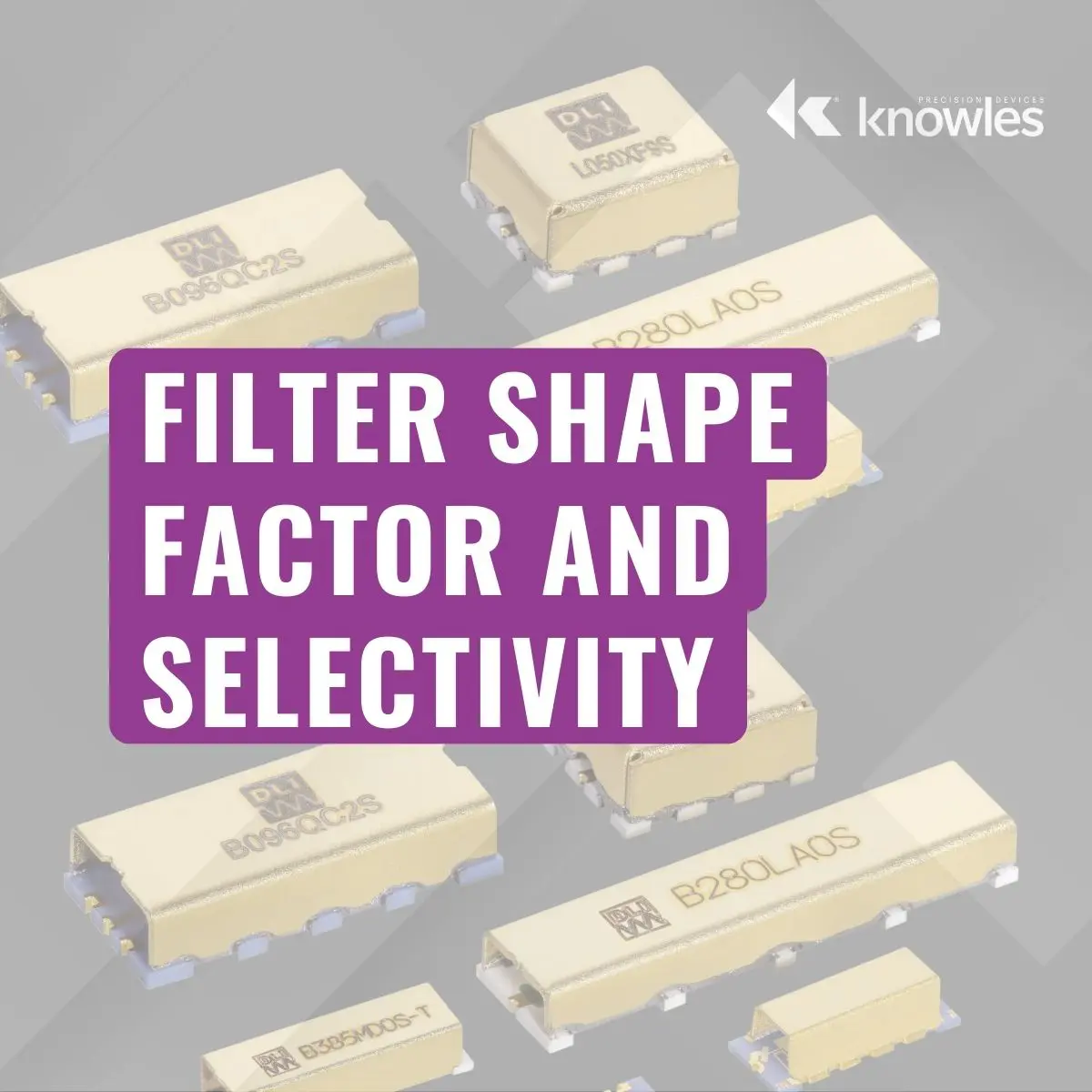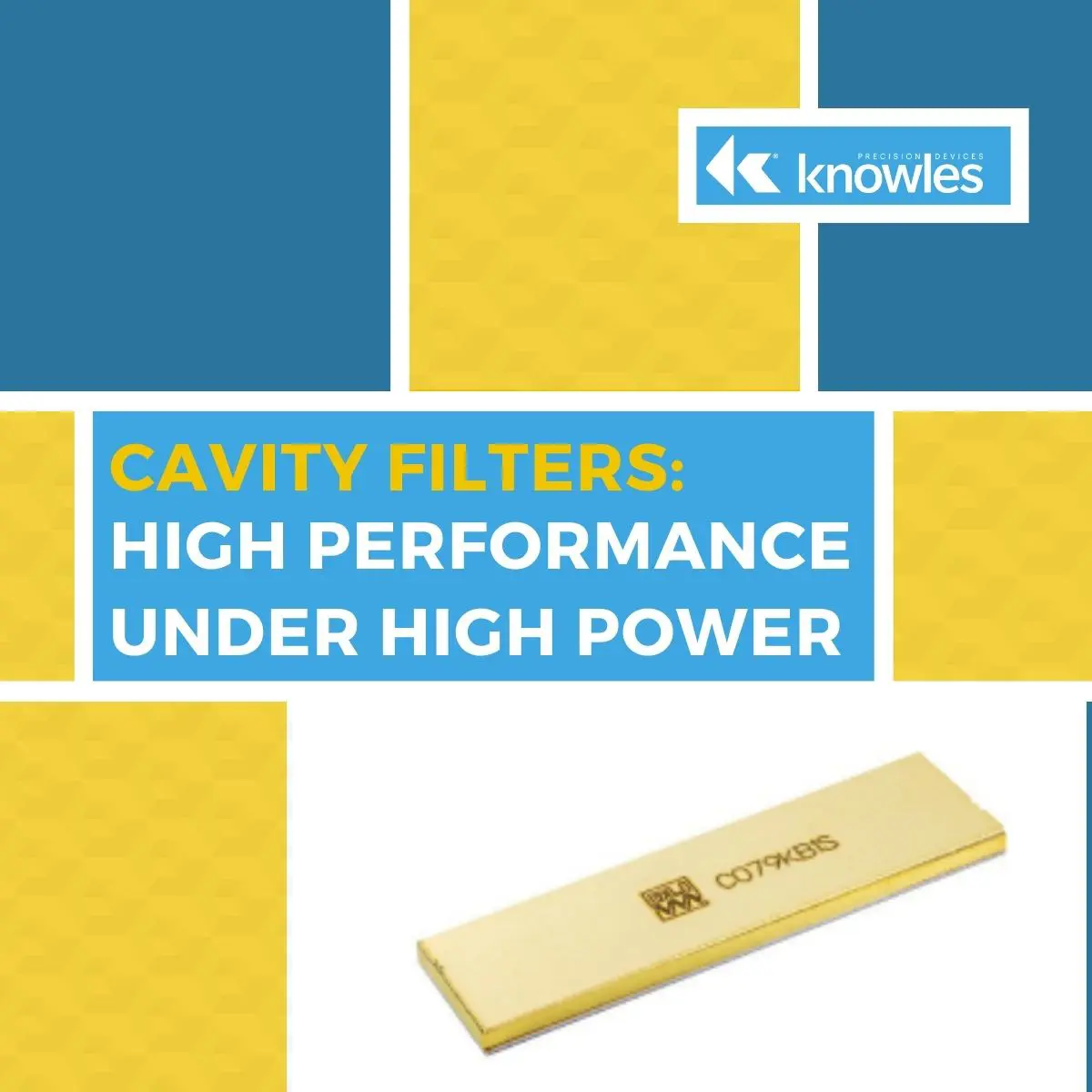Passive gain equalizers are designed to rectify or flatten the frequency response of an RF amplifier. RF amplifiers are known to cause a non-uniform gain over the operational bandwidth of a device, which results in distortion and other unwanted effects. Equalizers generate a counter-gain profile to offset that uneven response. Pairing equalizers and amplifiers is critical in applications like broadband systems where consistent performance over a wide frequency range enhances signal fidelity and system performance.
One of the things all technical disciplines excel at is creating terminology that can trip up those who are not accustomed to speaking the language every day. Take the title of this article for example. These three words sound similar and are definitely inter-related, but they are not inter-changeable.
Topics: RF and Microwave
Anatomy of and Stencil Design Recommendations for Our DLI Brand Filters
The Knowles Precision Devices DLI brand of technologies are designed to address the complex challenges of implementing high-performance mmWave filters across the widest range of specifications. Our Microwave Product Catalog covers how to select the best catalog or custom components for your application needs, while our new Microwave Products Guide provides valuable information and recommendations for how to work with our DLI brand microwave products once you have the components in hand.
Topics: RF and Microwave, Filtering
To choose the right filter for your application, you'll need to evaluate filter type, identify the specific filter technology that best suits your application, and ensure the filter meets your required specifications. This post is designed to serve as a quick reference on the common terms that are used to discuss filter type, technology, and specifications.
To start, there are four key Filter behaviors that sort them into types: Low Pass, High Pass, Band Pass, and Band Stop.
Topics: RF and Microwave
Achieve the Best Performance for Your Thin Film RF Devices
As the demand for faster communications across consumer and commercial devices continues to increase, operating frequencies of RF devices are being pushed higher and higher. This creates a number of challenges for RF device designers, as filter size must be reduced to compensate for smaller device sizes and shorter wavelengths while also maintaining high levels of performance. While surface mount technology (SMT), and in particular microstrip implementations, are an excellent option to meet these demands, it is important to note that not every SMT microstrip filter is created equal. There are a variety of choices to discuss with your filter supplier, such as substrate type, plating technology, and topology that can dramatically reduce the size and increase the performance of an SMT microstrip filter. One particular choice that Knowles Precision Devices has guided customers through for decades is the decision to use thin film for these filters.
Topics: RF and Microwave, Filtering, Build to Print
The Ideal Filter would have unit gain (0dB) in its pass band and a gain of zero (-infinity dB) in its stop band. Between pass band and stop band there would be no indecision and would transition from 0dB to -infinity dB asymptotically. It would pass only the required frequencies without adding or subtracting anything from the signal and like a very discrete and fastidious butler we would not see it - just its perfect management of the frequencies in its care.
Topics: RF and Microwave
When developing mission-critical space applications such as low Earth orbit (LEO) satellites or equipment designed for Mars missions, there are special considerations you must make if you will be operating your RF circuits in a vacuum. This is because when pressure in the vacuum is below 10-2 Torr, a potentially catastrophic phenomenon in RF circuits called multipaction is possible.
Topics: RF and Microwave
Back to Basics: Breaking Down the Fundamentals of Filters
To help our customers with filter selection, we generally provide a lot of detailed information on what our various filters can do. However, we thought it also might be really helpful for our customers if we took a step back and covered some background information on how filters do what they do. Regardless of the technology behind the filter, there are several key concepts that all filters share. Therefore, we decided it was time to bring together our top engineers so that we could compile their extensive filtering knowledge into a comprehensive Filter Basics ebook.
Topics: RF and Microwave, Filtering
Cavity Filters: High Performance Under High Power
As discussed in previous blog posts, resonators are the building blocks used to create filters. Recently, we published a blog post that discussed two different types of resonators – coaxial ceramic and dielectric. In this post, we will cover the details of a third type of resonator – the cavity resonator.
Topics: RF and Microwave, Filtering
The generation of RF energy is critical for a wide range of technologies including magnetic resonance imaging (MRI), semiconductor manufacturing, industrial lasers, and wireless charging systems that require high-frequency current and minimal instances of power loss. For example, with an industrial laser, the RF plasma excitation, which is when electrons are broken off an atomic bond and plasma forms, requires RF sources ranging from 1kHz to 40.68MHz depending on the energy required, and a CO2 laser RF power supply that contains a standard source at 13.56MHz, 81MHz, or 125MHz.
Topics: Capacitor, RF and Microwave

.png)





.png)


